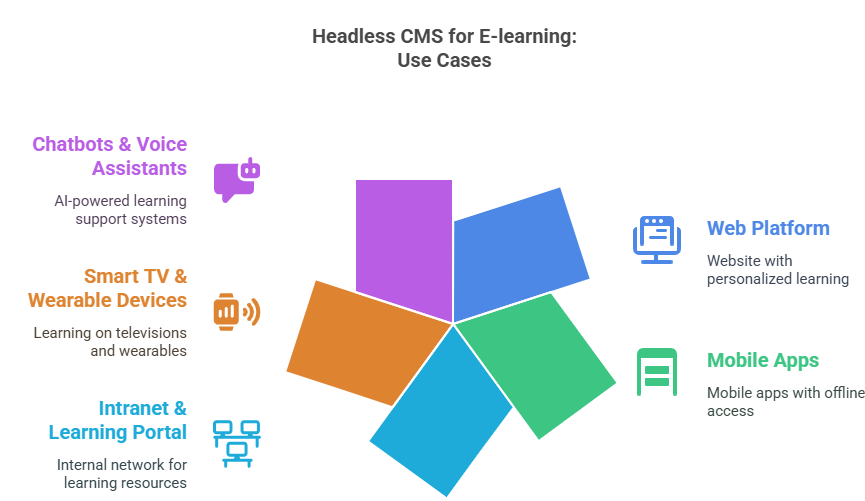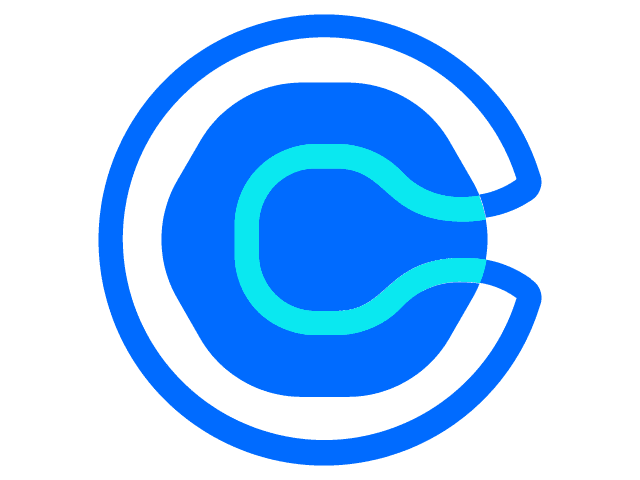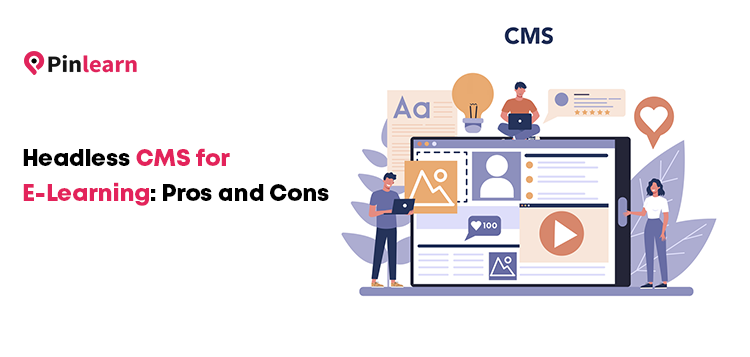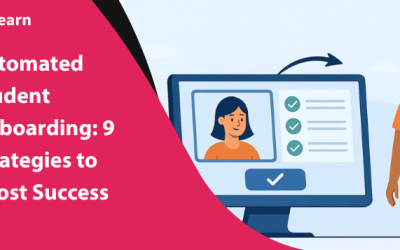Headless CMS for eLearning: Pros and Cons
Diversifying your revenue streams? Targeting new audience segments? Surge in new users? Definitely, meeting all these goals could be overwhelming without a proper scalability plan. However, modern technology can make growing your business easier.
Headless CMS is one such solution to streamline your performance and content needs. In this blog, you’ll find everything on headless CMS for e-learning. From its basic mechanism to how it differs from traditional CMS and much more. So, let’s get started!
What is a Headless CMS? How Does it Work?
A headless CMS is much like a content repository for creating, storing and managing data. Unlike traditional CMS, it doesn’t have a front-end (the presentation layer for formatting, designing, and deploying content).
A body(back-end) without a head(front-end) that separates your website content from how it looks across different screens.
Although this seems to be surreal, it does exist!
Essentially, the architecture has three different parts:
- Content management interface (front-end)
- Content repository (back-end)
- API to bridge & deliver data to diverse front-ends.
How does Headless CMS work?
Headless CMS separates development and content authoring. This separation allows developers and content authors to focus on their specific domains.
1. Content Creation
Editors create content through a web-based interface. This content is stored in the CMS database.
2. API Access
The API bridges the content to the front end (device or application). This connection point is typically a REST or GraphQL. The APIs return structured data to request calls.
3. Front-End Fetches Content from Repository
The front-end interface, built with React or Vue, makes an API request to a headless CMS.
4. Content Delivery
Finally, the data received from CMS is delivered across multiple front-end interfaces. Websites, wearable devices, mobile apps or even IoT devices are few examples. The separation between both layers adds independence to the way the data is presented.
Pros of Headless CMS
Ideally, a headless CMS differentiates between front-end and back-end experiences, overruling the tight coupling of traditional CMSs. With evolving learning needs, Headless CMS makes scalability & storage easier.
-
Omnichannel Learning Experiences
Freedom & flexibility — to learn from anywhere is now a top priority for online learning. Students & professionals no longer limit their learning experiences to websites. They can learn the same content on either mobile apps or other devices. This provides choice, multifaceted, and all-rounded learning experience!
-
Easier & Quicker Editing experiences
The separation of the front-end and presentation layer makes it easier for authors to edit the content. Edit the content once and publish it everywhere, irrespective of its appearance. Preview your content changes in real time with CMS’s visual editing feature.
-
Less Maintenance
Whether it’s real-time content updates, adding an extra module, or delivering notifications, headless CMS offers ease of maintenance. Thus, instructors get more time to create valuable content.
-
Lower Cost
Headless CMS offers a scalable and flexible content framework. This brings down the maintenance cost of your e-learning solution.
-
Enhanced Security
The decoupled architecture offers better security against DDOS attacks. A Headless CMS communicates data through client-side JavaScript that renders to the front end. This reduces the burden on CMS and performance bottlenecks.
Cons of Headless CMS
These were the benefits of headless CMS.
Now, let’s look into the challenges of decoupled architecture:
-
More Reliance on Developers
The absence of a front-end layer means more dependency on developers to create a capable presentation layer. Further, this increases the development cost.
-
Migration Challenges
Lack of front-end leads to migration and development complexity. You could even expect longer development cycles. Data conversion involves dealing with outdated content and sitemaps, which is a major challenge.
-
Greater Learning Curve
Authors and developers take time to embrace this new architecture. This indicates a steeper learning curve!
-
Integration Challenges
Integrating your headless CMS into your existing architecture is tedious. For e-learning solutions, this means integrating with third-party video conferencing tools, learning management systems (LMS), and other interactive tools.
Difference between Headless CMS and Other CMS
So, how does Headless CMS differ from its traditional predecessors?
Headless CMS Vs. Traditional CMS
| Aspect | Traditional CMS | Headless CMS |
| Architecture | One-to-one reach | One-to-many / Omnichannel Reach |
| Coupling | Tightly coupled front-end and back-end | Separate front-end and back-end |
| Extensibility | Monolithic | Modular |
| Device Compatibility | Limited | Responsive |
| Speed | Low load time | High load time |
| Workflow | Waterfall | Agile |
| Content Model | Single Page | Building blocks for several products |
| Ease of Use | Beginner-friendly and intuitive for WYSIWYG editors (non-technical users) | Requires technical expertise to implement |
| Scalability | Plugins for expanding the platform | API-integration for more flexibility |
When do Educational Institutions Need a Headless CMS?
While most businesses are making the obvious transition, you might wonder if you really need it!
So, is headless CMS the right choice for your e-learning solution?
The ball is in your court!
While making the decision, consider a few factors. Consider where you’re publishing, existing technology, and content update frequency.
For instance, for a small educational business with a limited audience, a headless CMS is not needed much. On the other hand, consider a large-scale educational institution. A headless CMS could be a powerful aid to strengthen its omnichannel presence.
Here’s how headless CMS wins over traditional CMS:
-
Easy Editing & Content Delivery
With headless CMS, you don’t need to worry about the visual experience. It delivers a seamless experience across websites, student portals, or even mobile apps.
-
Better Structured Content
The Headless CMS doesn’t render anything. The API manages content across websites, mobile applications, and web apps using a single back-end.
-
Personalized Experiences
Unlike traditional CMS, headless CMS supports an atomic design. You create small bits of content, which are later assembled and reused on individual experiences.
-
Enhanced Security
The headless architecture ensures that an attack on one layer doesn’t affect the other layer. Even if the attacker breaches the security, they only gain access to API and not your website. So, there’s a minimal risk of data exposure. Also, the attack surface is smaller.
-
Better Performance
The CMS’ front end doesn’t manage and store content. Hence, you can easily optimize its performance and speed. You can work on reducing image size, adding CDN to cache frequently used components, and organizing scripts.
E-learning Use Cases in Headless CMS
In an age of personalization, headless CMS is a powerful tool to script tailored learning experiences.

Web Platform
Create your personal website with a headless CMS. Personalize learning experiences by offering course content, quizzes, interactive assessments and lessons.
The front end includes frameworks like React, Vue, or Angular. The headless CMS acts as a content repository to store & manage content; the front end accesses content via API. For example, customized learning portals like Udemy or Coursera.
Mobile Apps
Create a mobile learning app with offline access. Here learners can book private lessons, take quizzes, or self-paced language courses.
The mobile devices are built on Flutter, React Native, etc. And the API delivers the content from CMS. For example, language learning apps like Duolingo or Preply offer personalized learning lessons.
Intranet & Learning Portals
Create centralized student portals to store recordings and test scores. Integrate it with LMS for progress tracking, enrollment & certifications.
For example, you can use Contentful with Moodle.
Smart TVs & wearable devices
Video streaming helps in streaming interactive classes, lectures, webinars, etc. Headless CMS can help in metadata categorization and streaming URLs. Wearable devices are great for push notifications, improving learning scores, etc.
For example, fitness workout studio streaming classes on smart TV.
Chatbots & Voice Integrations
Headless CMS can feed data into chatbots or voice assistants like Alexa or Google Assistant. Use cases include microlearning, learning tips and reminders, quizzes, and assessments.
Different Headless CMS Solutions
Looking for a popular headless CMS for your e-learning platform? There are several headless CMS solutions offering flexibility & content delivery for e-learning solutions.
Here’s a curated list of popular headless CMS:
-
Strapi
Strapi is a popular open-source, customizable headless CMS. It makes content management smooth and easier.
Features: Diverse content types, role-based access control, GraphQL and Rest API, extensive plug-in support
Use Cases: Custom e-learning portal with front-end like React, Vue, etc.
-
Contentful
Contentful is an enterprise-grade headless CMS with flexible content modelling. It supports easy integration with multiple channels and platforms, catering to complex needs.
Features: Role-based permission, localization, rich text editor, digital asset management, webhooks
Use Cases: Global e-learning marketplace offering diverse courses
-
Sanity
Sanity is a powerful headless CMS with collaborative features.
Features: Structured content modelling, real-time collaboration, version control, rich media support
Use Cases: Deliver omnichannel content experiences. A learning portal across web, mobile, and smart devices.
-
Directions
Directus is an open-source, scalable, headless CMS with multiple channels. It helps e-learning platforms for better content management and enhanced productivity.
Features: API-driven content management, real-time content updates, versioning, self-hosted
Use Cases: Course platform with pre-recorded lectures, audio clips, and ebooks using its back-end-as-service
-
Ghost
Ghost offers a simple, intuitive interface and flexible publishing workflows perfect for enterprise-grade applications.
Features: Content scheduling, multi-language support, subscription support
Use Cases: Subscription-based e-learning website offering content blogs and newsletters.
Conclusion
Headless CMS’s decoupled architecture is ideal for your e-learning platform’s growth. From performance and scalability to easy content delivery, headless CMS is a game-changer!
We have explained the significance of headless CMS for e-learning.
First and foremost, evaluate if your business needs a headless CMS. A static website with fewer content updates doesn’t ideally need a headless CMS. Evaluate your platform’s performance, scalability, and content needs to find a befitting CMS solution.
So, are you ready to go headless and upgrade your e-learning platform?
FAQs-related to Headless CMS for E-Learning
1. What are the pros and cons of headless CMS?
Headless CMS edges ahead with omnichannel support, ease of maintenance, easy editing, and security. The challenges include migration complexity, a steep learning curve, and issues with third-party integration.
2. How does Headless CMS differ from traditional CMS?
Headless CMS significantly differs from traditional CMS in terms of architecture and front-end flexibility. The main difference is headless CMS — separate back-end and front-end. In contrast, traditional CMS follow a tightly coupled front-end and back-end framework.
3. When not to use Headless CMS?
You don’t need a headless CMS if:
- You publish on a single website rather than multiple channels
- Your platform has simple publishing needs — static content with few updates
- Limited budget constraints
- Staff includes non-technical editors
- Your e-learning solution needs built-in features like themes, visual editing experience
4. Is headless CMS faster?
Headless CMS provides a clear separation between front-end and back-end, enhancing website performance and speed. A separate front-end allows businesses to optimize their scripts, page load times, and other performance bottlenecks. Besides, the CMS caters to your scalability and extensibility needs.
5. How headless CMS benefits e-learning?
With a headless CMS you can create content once, and publish multiple times. You can push content across multiple platforms — websites, LMS, mobile apps, and more.





